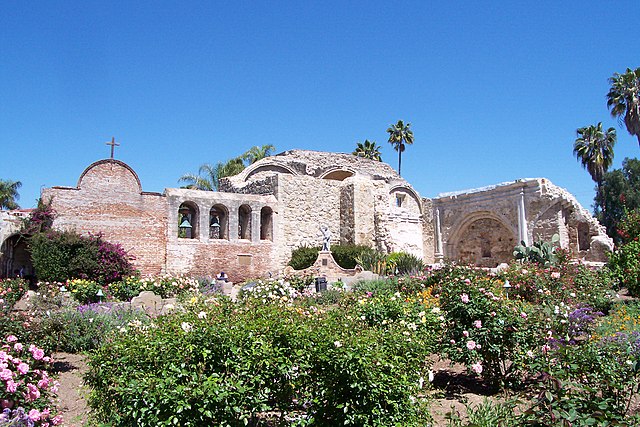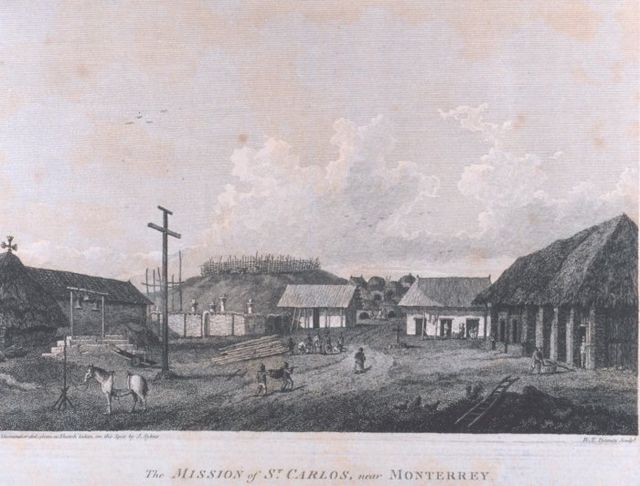El Camino Real (California)
El Camino Real is a 600-mile (965-kilometer) commemorative route connecting the 21 Spanish missions in California, along with a number of sub-missions, four presidios, and three pueblos. Historically associated with the Calle Real which terminates in Mexico City, as the former capital of New Spain and the seat of royal power for Las Californias, its southern end in the modern U.S. state of California is at Mission San Diego de Alcalá and its northern terminus is at Mission San Francisco Solano.
East entrance of San Gabriel Mission with an El Camino Real bell
A historical marker situated along El Camino Real
One of the commemorative bells, placed at El Pueblo de Los Ángeles Historical Monument with wayfinding markers to Mission San Fernando and Mission San Gabriel
Mission San Miguel as seen from the road while driving the "commemorative route" of the Camino Real
Spanish missions in California
The Spanish missions in California formed a series of 21 religious outposts or missions established between 1769 and 1833 in what is now the U.S. state of California. The missions were established by Catholic priests of the Franciscan order to evangelize indigenous peoples backed by the military force of the Spanish Empire. The missions were part of the expansion and settlement of New Spain through the formation of Alta California, expanding the empire into the most northern and western parts of Spanish North America. Civilian settlers and soldiers accompanied missionaries and formed settlements like the Pueblo de Los Ángeles.
A view of Mission San Juan Capistrano. At left is the façade of the first adobe church with its added espadaña; behind the campanario, or "bell wall" is the "Sacred Garden." The Mission has earned a reputation as the "Loveliest of the Franciscan Ruins."
Mission San Luis Rey de Francia, circa 1910. This mission is architecturally distinctive because of the strong Moorish lines exhibited.
The Missionaries as They Came and Went. Franciscans of the California missions donned gray habits, in contrast to the brown that is typically worn today.
A drawing of Mission San Carlos Borromeo de Carmelo prepared by Captain George Vancouver depicts the grounds as they appeared in November 1792. From A Voyage of Discovery to the North Pacific Ocean and Round the World.








